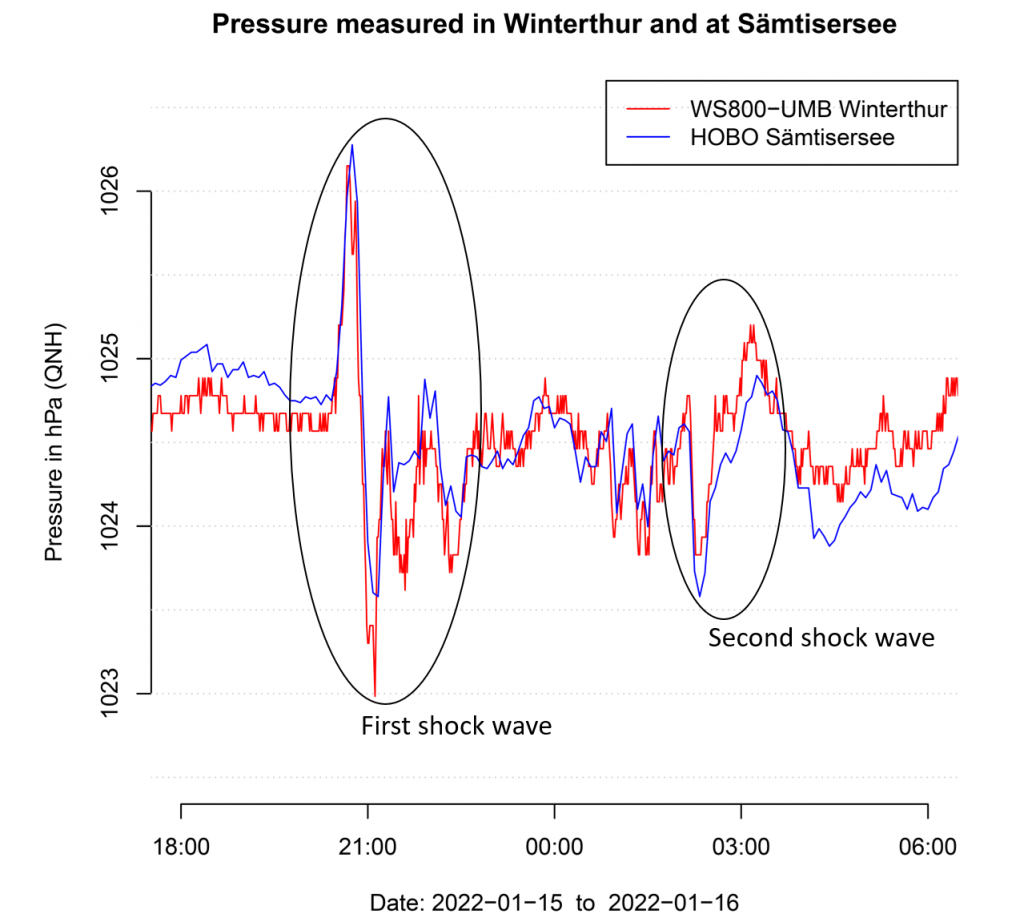Navigation menu
- Education
- Emissions & Air Quality
- Infrastructure & Services
- Meteorology & Climate
- News
- Physical Chemistry
- Projects
- The Team
The largest eruption of the Hunga Tonga-Hunga Haʻapai volcano occurred on January 14th, 2021 at 17:15 local time (2022-01-15 04:14:45 UTC). Preliminary data shows that the event was probably the largest volcanic eruption since the 1991 eruption of Mount Pinatubo. It was so powerful that the shock wave completely circled the globe – multiple times! This was also recorded by our meteorological measuring instruments on the roof of the ZHAW building in Winterthur as well as of our temporary station installed in the Appenzell.

Shortly after 8 PM (19:00 UTC), the first shock wave reached Switzerland from the North (shortest distance between Tonga and Switzerland). Within a few minutes, the pressure rose by more than 1 hPa and then immediately dropped by about 3 hPa before rising again to about the same level as in the beginning (Figure 1). The first shock wave thus reached us a little more than 15 hours after the eruption, which means that the shock wave travelled at a speed higher than 1000 km/h. The second shock wave, travelling via the South Pole, was recorded after 2 AM that night. This one was already much weaker, as it had already interacted with the first shock wave in the atmosphere.
Matthias Sänger (@myweather_ch) documented the possible interefences of our atmosphere with the shockwave elegantly, using data from the SwissMetNet.